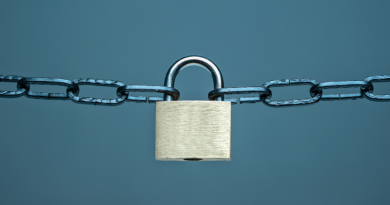Lockdown doesn’t mean no health and safety
So 2020 will forever be known as the year of COVID-19 – the year of unanticipated and unprecedented disruption – both on a tragic human scale and an economic one too. Many businesses have been forced to close. Some have had to suspend operations. Others have had innovation forced upon them. A handful have managed to thrive throughout the crisis.
Many companies have had to change their entire approach to certain aspects of their business, such as operating processes, for example, or marketing. However, other elements of running a business remain constant. The obvious example is accounts. There’s another, which might be tempting to overlook. Tempting, maybe … but to do so would be a mistake. We’re talking here about health & safety.
“It shall be the duty of every employer to ensure, so far as is reasonably practicable, the health, safety and welfare at work of all his employees.” – Health and Safety at Work etc. Act 1974
Your business may have remained open and fully functioning throughout successive lockdowns. Or perhaps you’ve had to curtail or suspend your operations. Either way, issues relating to health and safety should still remain paramount. Regardless of your circumstances, your health & safety responsibilities still apply.
Virtual health and safety service
Now’s the time, not to brush health & safety matters to one side, but to ensure you’re still do all you can to keep your employees and visitors safe. Just because your workplace might not be open right now, doesn’t mean you shoudn’t be planning your health and safety policy for when you re-open.
Health and safety companies are increasingly committing to providing businesses of all types with a virtual health and safety consultancy service – delivering simple, uncomplicated health and safety advice and support that works for you. They are offering the following types of service –
- A comprehensive review of health & safety policies, procedures and risk assessments along with relevant advice and guidance.
- Provision of remote support via email, telephone, Microsoft Teams, Skype or Zoom.
- A full review of accident investigation procedures.
- Advice and support for RIDDOR reporting.
- Coaching and support to your management team via Skype, Teams, or Zoom.
- Aid compliance with section 7 of The Management of Health and Safety at Work Regulations 1999, plus the appointment of a competent person.
Virtual health and safety coaching
One option is to ask you health and safety provider to offer you coaching – helping you to identify the most significant hazards in your business. The operating model we recommend is
- Plan
- Do
- Check
- Act
The Plan, Do, Check, Act approach achieves a balance between the systems and behavioural aspects of management. It also treats health and safety management as an integral part of good management generally, rather than as a stand-alone system. Elaborating from the HSE site –
Plan
- Think about where you are now and where you need to be
- Say what you want to achieve, who will be responsible for what, how you will achieve your aims, and how you will measure your success. You may need to write down this policy and your plan to deliver it
- Decide how you will measure performance. Think about ways to do this that go beyond looking at accident figures – look for leading as well as lagging indicators. These are also called active and reactive indicators
- Consider fire and other emergencies. Co-operate with anyone who shares your workplace and co-ordinate plans with them
- Remember to plan for changes and identify any specific legal requirements that apply to you
Do
- Identify your risk profile
- Assess the risks, identify what could cause harm in the workplace, who it could harm and how, and what you will do to manage the risk
- Decide what the priorities are and identify the biggest risks
- Organise your activities to deliver your plans
In particular, aim to:- Involve workers and communicate, so that everyone is clear on what is needed and can discuss issues – develop positive attitudes and behaviours
- Provide adequate resources, including competent advice where needed
- Implement your plan
- Decide on the preventive and protective measures needed and put them in place
- Provide the right tools and equipment to do the job and keep them maintained
- Train and instruct,to ensure everyone is competent to carry out their work
- Supervise to make sure that arrangements are followed
Check
- Measure your performance
- Make sure that your plans have been implemented, ‘paperwork’ on its own is not a good performance measure
- Assess how well the risks are being controlled and if you are achieving your aims. In some circumstances formal audits may be useful
- Investigate the causes of accidents, incidents or near misses
Act
- Review your performance
- Learn from accidents and incidents, ill-health data, errors and relevant experience, including from other organisations
- Revisit plans, policy documents and risk assessments to see if they need updating
- Take action on lessons learned, including from audit and inspection reports
How a typical health and safety coaching program can work
You’ll learn to carry out the following procedures for yourself –
- How to review, implement and monitor your existing policies and procedures
- How to review your fire risk assessment and implement consequential action measures
- How to review your existing risk assessments. How to judge whether additional controls need to be considered. How to implement them. How to monitor that they are actively being followed.
Following the coaching sessions, you would be set tasks to prepare for the next session. This might be to take photos or videos of activities in progress, or of your site and equipment, or maybe to provide copies of service, maintenance or inspection paperwork.
Remote consultancy
Sometimes your business may just need help to determine what is ‘so far as is reasonably practicable’. Maybe, if you’re not sure what you need to do to be compliant, you need someone to ask. Perhaps you need reassurance as to how planned changes may impact on health and safety. Your Health and Safety advisor will help to remove the worry, enabling your business to continue more smoothly.
Remote meetings
Health and Safety is an integral part of running a business. It’s vital to plan from the very start of any project. A virtual health and safety service means you’ll have an experienced professional on hand remotely to attend your management or health and safety meetings. They’ll advise on any areas, and answer any questions.
Remote support
In your business, you may well have a Health and Safety Manager. However, their colleagues or manager may not have the same level of experience or qualifications in health and safety.
Your health and safety advisor will provide coaching support to your health and safety employees. Everyone will feel confident that they are taking the most appropriate action or following the best procedures in any situation.
Originally posted 2020-11-06 13:36:20.
- How recruitment can boost productivity - November 10, 2025
- Lockdown doesn’t mean no health and safety - July 24, 2025
- Health and safety is more than a procedure - January 4, 2025






